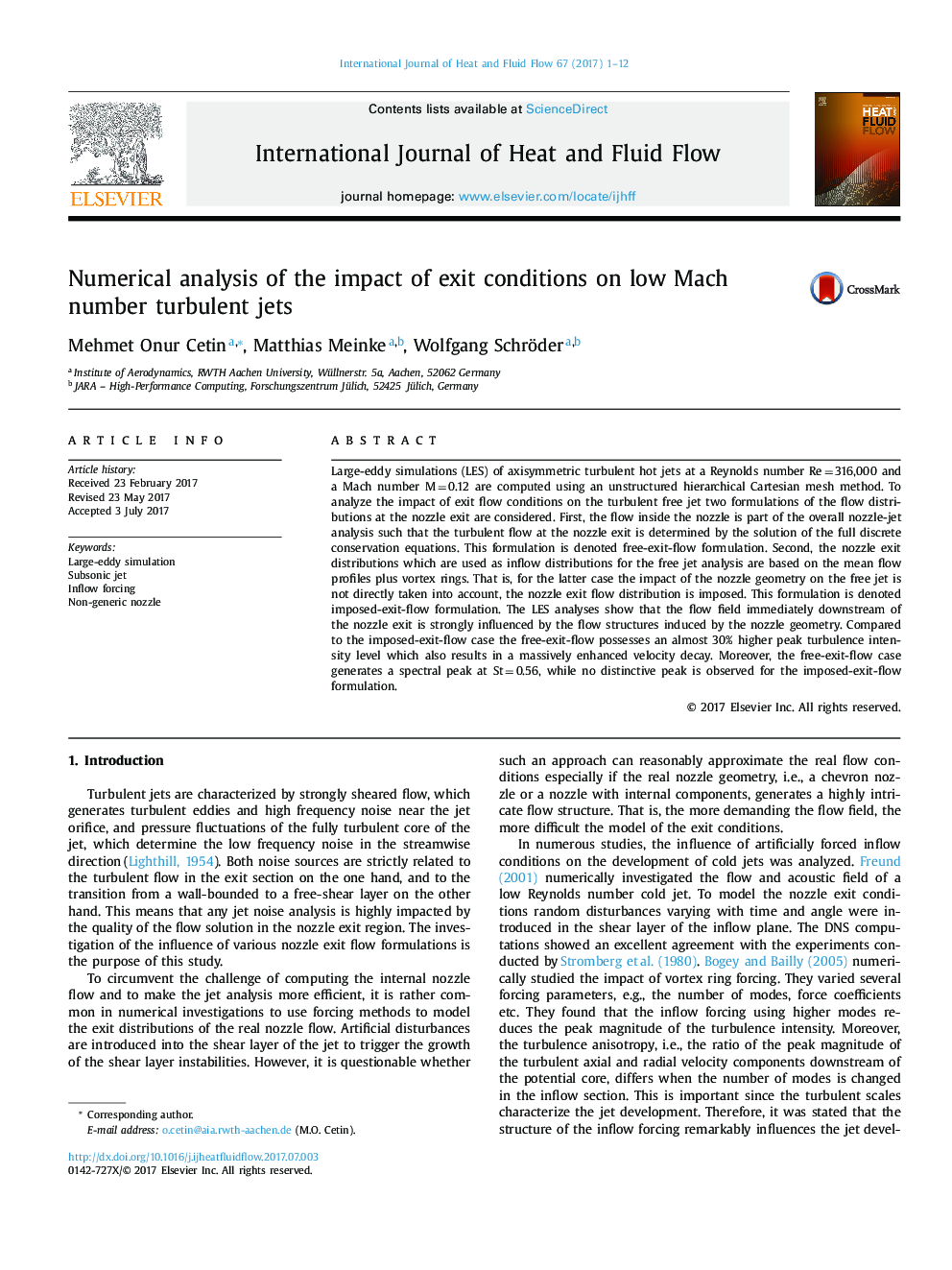| Article ID | Journal | Published Year | Pages | File Type |
|---|---|---|---|---|
| 4993147 | International Journal of Heat and Fluid Flow | 2017 | 12 Pages |
Abstract
Large-eddy simulations (LES) of axisymmetric turbulent hot jets at a Reynolds number Reâ¯=â¯316,000 and a Mach number Mâ¯=â¯0.12 are computed using an unstructured hierarchical Cartesian mesh method. To analyze the impact of exit flow conditions on the turbulent free jet two formulations of the flow distributions at the nozzle exit are considered. First, the flow inside the nozzle is part of the overall nozzle-jet analysis such that the turbulent flow at the nozzle exit is determined by the solution of the full discrete conservation equations. This formulation is denoted free-exit-flow formulation. Second, the nozzle exit distributions which are used as inflow distributions for the free jet analysis are based on the mean flow profiles plus vortex rings. That is, for the latter case the impact of the nozzle geometry on the free jet is not directly taken into account, the nozzle exit flow distribution is imposed. This formulation is denoted imposed-exit-flow formulation. The LES analyses show that the flow field immediately downstream of the nozzle exit is strongly influenced by the flow structures induced by the nozzle geometry. Compared to the imposed-exit-flow case the free-exit-flow possesses an almost 30% higher peak turbulence intensity level which also results in a massively enhanced velocity decay. Moreover, the free-exit-flow case generates a spectral peak at Stâ¯=â¯0.56, while no distinctive peak is observed for the imposed-exit-flow formulation.
Keywords
Related Topics
Physical Sciences and Engineering
Chemical Engineering
Fluid Flow and Transfer Processes
Authors
Mehmet Onur Cetin, Matthias Meinke, Wolfgang Schröder,
